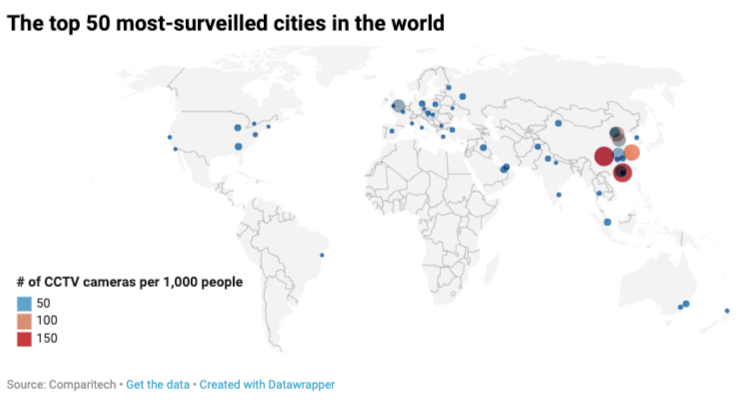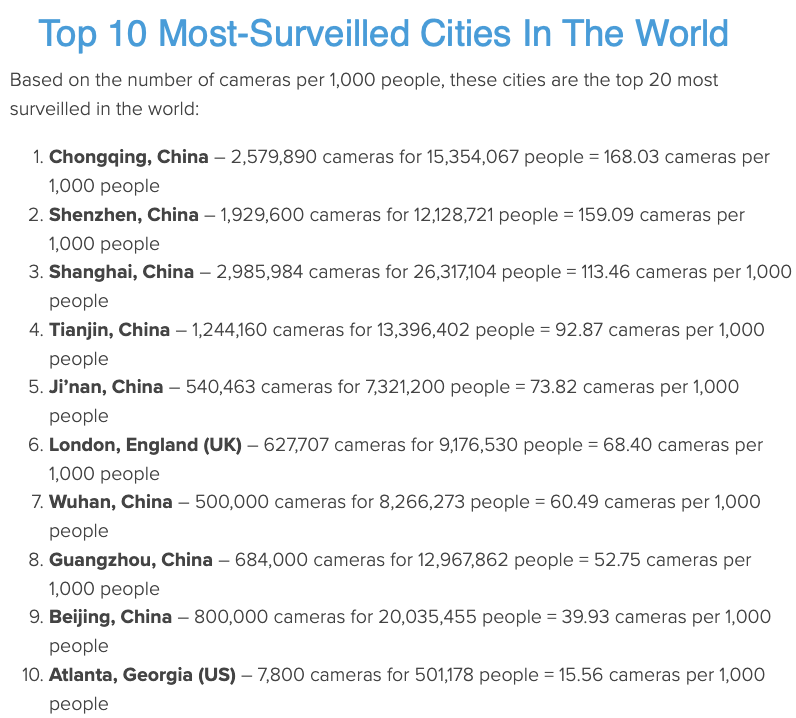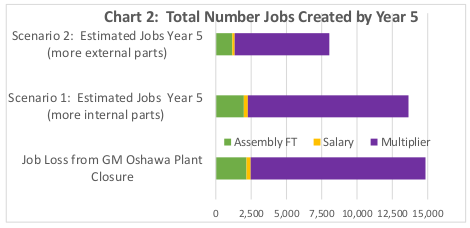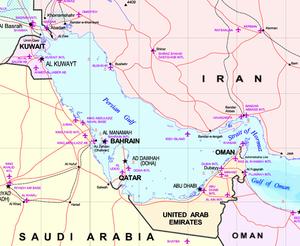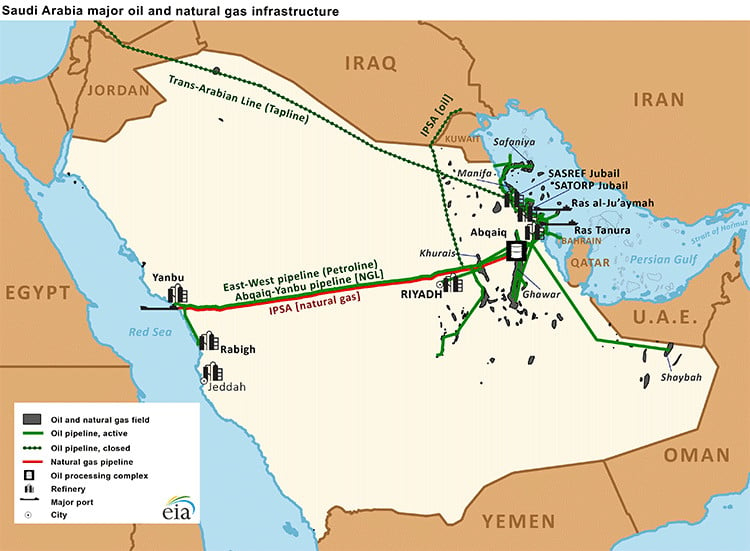Most of the country’s economy ground to a halt. For more than a week, the cities remained ghost towns, as army troops continued attacking even ordinary civilians who are desperate to earn a living in what often seems to be the country’s main occupation these days: street vending of cheap imported commodities. A national strike of 500,000 civil service workers has been called. Most essential commodities are now vastly overpriced or in very short supply. This is what a full-on capitalist crisis looks like.
The stresses are obvious within elite politics, for as ever in Harare, rumours of political upheaval abound. But whatever happens to the ruling party’s leadership, a more brutal fiscal policy plus an even tighter state squeeze on hard currency appear to be the new constants. The stubbornness of President Emmerson Mnangagwa’s leadership is partly due to the ideological fervour of his finance minister, Mthuli Ncube, an academic economist with a dubious practical track record and fast-fading international credibility (as CNN interviewers now openly laugh at answers to questions). Ncube argues that Zimbabwe’s problems boil down to loan repayment arrears to international creditors, a high state budget deficit and a trade deficit.
In addition to ultra-neoliberal macroeconomics, Mnangagwa depends on Vice President Constantino Chiwenga’s renewed authoritarian tendencies. The country’s crony-capitalist system is being shaken by its own contradictions, even more profoundly than in the darkest days: before Rhodesian colonisers finally gave up power in 1980, when the Third World debt crisis hit hard in 1984, when deindustrialisation began with a “homegrown” (i.e. World Bank-transmitted) structural adjustment programme in 1991, when foreign debt defaults began in 1998, in the lead up to several hotly-contested elections (especially 2000, 2002, 2005 and 2008), and when the local currency crashed to its death in 2009.
Post-coup, return of the “IMF Riot”
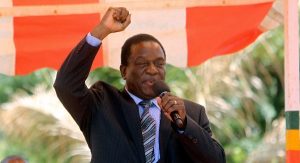
The protest was sparked by a 150 percent overnight price increase in petrol announced on Saturday, 12 January. At US$3.31/litre, this makes it the world’s most expensive retail fuel, with Hong Kong second at US$2.05/litre. The next day, Mnangagwa and a plane-load of colleagues departed for Russia, Belarus and Azerbaijan and Kazakhstan in search of mineral investors, energy deals and what the president called Moscow’s “state of the art” (albeit unaffordable) military equipment. Indeed, Mnangagwa was meant to continue to Davos for the World Economic Forum, but was persuaded that the country – and his own leadership – were in peril, so instead headed home.
Mnangagwa’s first tweet after arriving back in Harare was in defence of the fuel price hike, “not a decision we took lightly. But it was the right thing to do. What followed was regrettable and tragic.” He promised to look into army and police thuggery, but hopes for a reckoning are vain, since his own background is littered with the country’s most extreme post-liberation repression (he managed the 1980s “Gukurahundi” massacres of more than 20,000 Ndebele people), and since his own spokesman (inherited from Mugabe) told the press that the recent army attacks – which included numerous rapes– were “a foretaste of things to come.”
At this writing, army repression continues and leading activists remain behind bars, including five members of parliament. The term that veteran Zimbabwean social justice activist Elinor Sisulu uses to describe Mnangagwa’s dictatorial tendencies, “Mugabesque,” is now very hard to refute, in spite of Ncube’s surreal whitewash attempts in Davos last week.
Recall that Mugabe had run Zimbabwe since 1980, after leading the armed liberation struggle against the white racist Rhodesian regime of Ian Smith. Twenty years on, he was threatened with probable electoral defeat. So his belated, urgent and chaotic land reform – against a few thousand mainly-reactionary white settlers who for a century had controlled nearly all Zimbabwe’s good farmland – gained him permanent hatred from the Western establishment. Though land redistribution was justifiably popular in some circles, Mnangagwa last year admitted that the acquisitions had “robbed the country of its breadbasket status,” given how much of the staple maize needed to be imported (even while tobacco production hit record highs). As a result, land acquisition was “now a thing of the past,” the new president promised.
Riddled with corruption and dictatorial tendencies, Mugabe’s ruling party – the Zimbabwe African National Union-Patriotic Front (Zanu-PF) – had meanwhile become widely hated in the cities, which were mainly governed by the liberal opposition party, the Movement for Democratic Change (MDC), whose constituents gave Mnangagwa’s 2017 coup their immediate, joyful approval. But the celebration was brief and the hangover long, for MDC founding leader Morgan Tsvangirai died of cancer early last year and the mid-2018 national election witnessed Mnangagwa victory’s, one that his MDC successor, Nelson Chamisa, considered to be rigged.
Mnangagwa came to power in November 2017, assisted by then army commander Chiwenga, after a relatively non-violent (and then very popular) weeklong coup against Mugabe, one re-labelled a “military-assisted transition” by opportunistic diplomats in order to avoid the legal consequences. Although Mugabe was often abused by Chiwenga and Mnangagwa in prior years, according to his private secretary, the “father of the nation” was useful to the junta, and he was compelled to remain in office by Chiwenga after losing the first round of the 2008 election to Tsvangirai in lieu of turning over power to the MDC.
From the plotters’ standpoint, the crucial mistake made by the 93-year old leader in late 2017 was the excessively rapid elevation of his (four-decade younger) wife Grace Mugabe. She was briefly considered to be his likely successor once she managed to get Mnangagwa fired as vice president a week prior to the coup. The Mugabes now live in politically-uncomfortable and apparently careless luxury, akin to house arrest, despising the coup-makers (and endorsing last year’s electoral opponent) but also under their thumb.
 The 2017 coup relied on Chiwenga’s Joint Operation Command, an army junta that was already controlling much of Zimbabwe behind the scenes, partly funded by diamond mining arranged through Chinese mining joint ventures. Given how erratic Mugabe had become, how his policies discouraged investment, and how he turned against the Chinese firms allied with Chiwenga in 2016 due to their prolific diamond looting, former allies in Beijing welcomed the change in power. Pretoria-Johannesburg elites and Western powers – especially Britain – were also upbeat.
The 2017 coup relied on Chiwenga’s Joint Operation Command, an army junta that was already controlling much of Zimbabwe behind the scenes, partly funded by diamond mining arranged through Chinese mining joint ventures. Given how erratic Mugabe had become, how his policies discouraged investment, and how he turned against the Chinese firms allied with Chiwenga in 2016 due to their prolific diamond looting, former allies in Beijing welcomed the change in power. Pretoria-Johannesburg elites and Western powers – especially Britain – were also upbeat.
However, aside from adopting much more pro-business rhetoric and initially liberalising politics to an unprecedented degree, Mnangagwa and Chiwenga didn’t lose their taste for repression. According to the progressive coalition known as Crisis in Zimbabwe, the last week has witnessed “Mass trials, fast-tracked trials, routine denial of bail, routine dismissal of preliminary applications, refusal of access to medical treatment and trial and detention of juveniles.” For nearly a week, disconnections of social media and the Internet were also added to the toolbox, until a 21 January court order catalysed by human rights lawyers reversed the state’s ether-clampdown.
In Davos last week, Ncube defended the Chiwenga’s Internet disconnection as just “a temporary and tactical strategy to try to manage the situation… managing insurrection, and managing information and dissemination.” Speaking to CNN, he bizarrely blamed last week’s protests on a “pre-planned” conspiracy and not his petrol price hike: “these are the facts.” Anger at the petrol price was “added on.” And he defended army intervention: “What you saw in the streets is actually a sign that the government is open. Democratic spaces are open.”
Two leading opposition politicians were scathing. Welshman Ncube (no relation) called him a “political moron” for these remarks, and former MDC finance minister Tendai Biti (from 2009-13) labels Ncube a “fraud.” As if to prove it, in another interview Ncube said of his Davos trip, “Things are going well. The theme is Globalisation 4.0. It resonates with what Zimbabwe’s trying to do in terms of global financial re-engagement, raising capital, pushing our mantra that Zimbabwe’s open for business. It really resonates. Zimbabwe is the best buy in Africa.”
Under Ncube, much more explicitly neoliberal, anti-poor fiscal and monetary policies prevail, with no end in sight. The new regime has been unable to make structural changes to an impoverished economy dependent upon primary-resource exports in a time of still-low world commodity prices. Since last September, when Ncube was appointed, budget cutbacks and desperation currency manipulation have logically followed.
The society knows this feeling of despondency. It appears often as a so-called “IMF Riot” – i.e., when people revolt immediately after a neoliberal shock (sometimes ordered by the International Monetary Fund) such as overnight removal of food or petrol subsidies. Zimbabwe’s prior IMF Riots were caused by severe shocks in 1998 when the currency fell 74 percent in four hours and in 1999 when Mugabe felt the need to default on foreign debt. In 2005-06 when Mugabe authorised repayment of US$200 million worth of IMF loans, the Reserve Bank officials gathered up all the hard currency they could find on the black market, sparking a wicked upsurge of inflation and another set of IMF Riots.
As for the class character of last week’s anger, two progressive researchers from the Institute for Public Affairs in Zimbabwe – Tamuka Chirimambowa and Tinashe Chimedza – explain, “the protests were intense in specific geographies associated with the urban poor and the ‘barely’ working class is a direct consequence of the existing political economy that is systemically unequal. The riotous protests were found and concentrated South of Samora Machel Avenue, contrasted to the affluent suburbs North of Samora Machel (Harare North), which enjoyed a peaceful stay-away. In Bulawayo, they were concentrated in the Western suburbs, in Mutare and Masvingo in the Southern Suburbs. The elite hob-knobbed on social media or their usual social spaces with very limited threats to their security and their only major outcry was the closure of shops and the Internet shutdown.”
The protests were predictable enough, and Mnangagwa and Ncube imposed the petrol price hike and immediately left town. Scheduled meetings with Vladimir Putin, leaders of three other repressive Eastern European and Central Asian countries, and the World Economic Forum took precedent.
Ncube’s vain arrears ambitions: pay, won’t pay or can’t pay – and can’t get new loans
Zimbabwe’s notorious shortage of hard currency was the proximate cause of the fuel price hike, followed by rapid price increases in anything requiring transport, including the staple maize. In turn, this squeeze reflects the priorities of a new finance minister, the academic economist Ncube, who is considered the most neoliberal in modern Zimbabwe’s history. Exhibiting a sometimes startling self-confidence, and entirely comfortable within the circuits of world elites, Ncube is smooth and at first blush, persuasive.
But his three most spectacular prior mistakes were, first, founding and chairing the Harare Barbican Bank, which launched in mid-2003 but then “failed to meet obligations” to the country’s clearance system within seven months, leading to expulsion. Two months later it was declared insolvent, as its regulator at the Reserve Bank of Zimbabwe explained, due to “serious liquidity problems as a result of imprudent banking behaviour… [including] questionable cross-border foreign exchange activities which are yet to be cleared to the satisfaction of all parties.”
A second mistake was serving well into 2018 as a top official at corruption-riddled financier Quantum Global, which ripped off Angola’s citizenry during his tenure there.
Third, as chief economist at the (Western-dominated) African Development Bank (AfDB) in 2011 at the height of “Africa Rising” hype, he declared the existence of a new “African middle class” of more than 330 million people: “Hey you know what, the world please wake up, this is a phenomenon in Africa that we’ve not spent a lot of time thinking about.” Oddly, Ncube included in the “middle class” category people who barely survive on US$2-4/day, a group of more than 200 million.
His smooth, optimistic talk notwithstanding, Ncube’s finance minister role since last September has been rocky. Interviewed last 3 December by Richard Quest on CNN, Ncube argued that the most serious economic problem he believes the country faces is foreign debt repayment arrears of US$5.6 billion, most of which date back 20 years. The arrears include US$1.3 billion owed to the World Bank, US$680 million to the AfDB, US$308 million to the European Investment Bank, US$2.8 billion to the Paris Club and at least US$500 million to non-Western lenders and firms, especially the Chinese state and South African corporations. Said Ncube, “The budget recognises that we have a twin deficit challenge, which is that we have a fiscal deficit as well as a current account deficit. But also we need to deal with our debt arrears in terms of debt restructuring. So two things that are confounded or rather magnified by the arrears.”
Ncube then promoted his homegrown structural adjustment programme, the Transition Stabilisation Programme, bragging that International Financial Institutions (IFIs) just gave the plan a warm endorsement: “We’ve sold it internationally. And then we’re willing to move to the next step, which is to clear the debt arrears with the AfDB and the World Bank, which is what you call the preferred creditor IFIs. We’re determined in the next 12 months that is done, and then we move on the second, the third phase, which is the Paris Club negotiations with the bilateral creditors.”
Finally, he offered this extraordinary claim: “Zimbabwe is indeed the biggest buy in Africa right now on any asset. You talk about the rule of law. Let me tell you, this is about property rights at the end day. Property rights are secure in Zimbabwe… Clearly Zimbabwe is the biggest buy in Africa right now.” Ncube then tweeted proudly about this “biggest buy” status, a claim he just repeated in Davos.
But the gap between Zimbabwe’s local “soft” currency (a combination of a local “Bond Note” bill and electronic payments) and the main currency used in Zimbabwe since 2009, the US dollar, has remained in the range of 3.5-4 times, even though they are pegged as equal. Inflation soared to 42 percent in December, with a black market raging and only US$400 million of paper US$s circulating in the banking system. Due to the physical shortage of US notes, for more than a year, day-long waits in bank queues to withdraw US$20 has been the norm. Ncube has promised to introduce a proper local currency within a year, but claims he must first clear arrears and end deficit spending so as to restore confidence.
Yet with a stiff upper lip, Ncube appeared in Davos at the World Economic Forum last week, announcing to CNN his intention to continue upping the economic pressure, including not just more fiscal discipline: “Externally, making sure we can begin to address our arrears in terms of what we owe to other nations, the Bretton Woods Institutions included. But fiscal discipline is key and if you noticed what has been happening since October 2018 the premiums in the parallel market have stabilised and this is because of fiscal discipline.”
Ncube utterly overstates budget cutbacks as a solution to all problems. Asked by Bloomberg about roaring inflation, he offered a simplistic, incorrect cause-and-solution: “It’s being driven by the parallel market in terms of pricing… that’s what has pushed up the prices, people speculating… What we’re doing about it is to just make sure that on the fiscal front we continue to make sure there is fiscal discipline, cutting back on government expenditure.”
Ncube’s no-gain-without-pain logic, in one of the most abused societies in Africa, failed to win Zimbabweans’ confidence. He erred last October when establishing Foreign Currency Accounts within the predatory banking system, in the process wiping out large amounts of savings, which devalued by two-thirds to black-market rates. Instead, he could have taken a predecessor’s advice: Biti advocated ring-fencing the bank accounts against their devaluation.
Last month, complained Biti, for the first time in modern Zimbabwe history, a finance minister prioritised a New York trip instead of debating his budget as scheduled in parliament. In a prior parliamentary appearance last October, Biti asked Ncube, “You seem to suggest that you are going to find money to clear the arrears and my question is, what country is going to give you the almost US$2 billion that you would require to pay off the arrears… you are going to try and clear the arrears that Zimbabwe has at the World Bank and AfDB. I am saying given the quantum of that debt, and given the fragility of our own situation now, which country is prepared to lend us the money that Zimbabwe has to use to clear?”
In spite of Ncube’s regular assurances of new credit lines based on his stellar Rolodex of banking contacts, he answered nebulously: “On the issue of debt clearance and which countries are going to help us, at the stage of clearing the AfDB and World Bank balances… of course we will negotiate with the various countries who are shareholders in those institutions and of course the Paris Club countries. We will negotiate with them, the G7, there are other members of European Union and in Europe who are willing to talk to us about this. We have had a conversation with them already, so we will continue to explore with them as to whether they can give us relief, but there are countries that we are speaking to.” But no details are ever forthcoming on the promised bailout.
Return of the IMF?
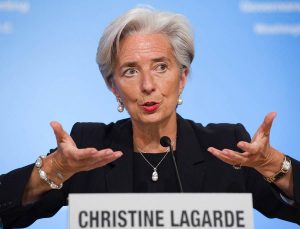
The most crucial bailout lender is still the much-feared IMF, to which Mugabe’s regime (questionably) repaid all arrears in late 2016. A series of self-delegitimising 21st-century leaders have helped reduce its reputation: Rodrigo Rato (jailed last October for bank fraud), Dominique Strauss-Kahn (resigned in disgrace but demanded IMF support for his 2011 rape trial) and still today (after a guilty verdict in 2016 for corruption ‘negligence’ in France), Christine Lagarde. Nevertheless, the institution remains the global policeman for the entire financial world, and since 1984 it has pummelled Zimbabwe into austerity and structural adjustment.
In early 2018, IMF spokesperson Gerry Rice endorsed the neoliberal path Mnangagwa had chosen:
“The authorities are cognizant of these challenges that they face and the economy is facing and they’ve expressed their determination to address them. The 2018 budget which they presented on 7 December, so about a month ago, stresses the government’s intentions to re-impose budget discipline, reform and open the economy, and engage with the broader international community, which is on-going and important in terms of arrears clearance.”
For budget shrinkage, he specifically recommended more agricultural subsidy cuts.
Again last September, as pro-IMF finance minister Ncube took office, Rice made clear that his staff “stand ready to help the authorities design a reform package that can help facilitate the clearance of external payment arrears to international development banks and bilateral official creditors and that they would open the way for fresh financing from the internal community including potentially the IMF. But, again, just to stress as we said before, potential financial support from the Fund is conditional on the clearance of those arrears to the World Bank, the AfDB and financing assurances from bilateral official creditors. We are working with the Zimbabwean authorities in the meantime to provide policy advice and technical assistance that might help, could help move that process forward.”
In December Rice reiterated IMF support for Ncube:
“The policies of the new administration under the Zimbabwe transition and stabilisation programme, do constitute a comprehensive stabilisation and reform effort in order to address Zimbabwe’s macroeconomic situation.”
And just as full reports of the most recent IMF Riot and army repression were filed on 17 January this year, Rice repeated his institution’s demands: “In terms of the IMF, Zimbabwe has in fact cleared its arrears to us, to the Fund, but our rules preclude lending to a country that is still in or under arrears to other international financial situations. So until that particular situation is resolved, we would not be moving forward with a financial support for Zimbabwe. I said here the last time that the authority’s economic policies we felt were headed in the right direction broadly in terms of addressing the fiscal deficit and monetary policy and so on. I won’t repeat what I said the last time but that’s where we are on Zimbabwe.”
Clearly the system needs a jolt to get out of the rut. Who can provide it?
Enter biggish brother: Talk left (about sanctions), lend right (about US$7 million)
The next door neighbour, South Africa offers the most logical crutch. A desperation visit by leading Harare officials to Pretoria the day after Christmas late last year included a request for a loan to clear the other arrears. The lead Treasury bureaucrat turned them down:
“Initially they wanted money, US$1.2 billion. We don’t have US$1.2 billion but what we have is the will to assist them… Our engagements are across the system — assisting from a budgeting implementation point of view, and reprioritising of public expenditure, including on their behalf engaging multilateral development institutions, which we have started.”
A year ago, the same official prepared the 2018-19 South African budget, cutting social programmes and municipal infrastructure support to such an extent that even neoliberal Business Day newspaper termed it “savage” – while allowing an extra 5 percent of all local institutional investor wealth, around US$36 billion, to escape the country via exchange control liberalisation.
With this mentality prevailing in Pretoria’s Treasury, it is no wonder that at the very high point of the state’s repression last week, South Africa’s neoliberal finance minister Tito Mboweni endorsed Ncube:
“I think the idea of using a new currency in Zimbabwe is a good one. I think our colleagues there are on a good wicket when it comes to that space. We are working together very well but at the end of the day it is Zimbabweans who need to fix their country.”
Zimbabweans can recount a long history of the South African ruling party propping up its liberation-era allies, Zanu-PF, when the latter turn most repressive. This occurred most regularly when Thabo Mbeki was president from 1999-2008. Laments veteran South African business journalist Barney Mthombothi,
“What still sticks in the craw for many Zimbabweans is the arrangement concocted by Mbeki ten years ago to keep Mugabe in power despite the fact that he had been defeated by Morgan Tsvangirai.”
Adding insult to injury, even while activists remained in appalling prison conditions on 20 January, Pretoria’s Foreign Minister Lindiwe Sisulu intoned,
“Protests in Zimbabwe have calmed down and life in the streets of Zimbabwe is returning to normal.”
When it comes to money, however, the South African finance minister reverts to type: a scrooge. According to Mboweni, the existing South Africa-Zimbabwe credit facility of a measly US$7 million was in any case backed by Harare’s collateral, in the form of “its holding of SA Land Bank bills. The extension of this facility depended on Zimbabwe being able to provide further collateral.” The potential low-level debt relief he implied would be a tokenistic sop to elite solidarity, and would do nothing to change the structural economic power and financial deficits that Zimbabwe faces in the region and the world.
However, if more South Africa credit materialises, it is also likely that Mboweni would try to get a higher repayment prioritisation for South African firms. More than just fraternal ideology, there is also blatant national-capitalist self-interest at work, as the Sunday Times reported:
“At least 15 major South African linked companies with operations in Zimbabwe were struggling to repatriate funds. These include Delta Beverages [beer and soft drinks] (40 percent owned by AB InBev), MultiChoice [cable television streaming] (owned by Naspers), Tongaat Hulett, PPC [cement] and Zimplats (owned by Impala Platinum). Other firms such as Edcon [clothing], Pick n Pay [food retail], Sanlam [insurance], Tiger Brands [wholesale food], Nedbank and Alexander Forbes [finance] either have units in Zimbabwe or are invested in locally owned business.”
Mboweni’s South African national budget will be tabled in parliament in one month’s time. It must make gestures to reducing parastatal agencies’ outsized debt, so in talks with Ncube he may even demand that the first repayment of arrears go to Pretoria’s bankrupt national airline, South African Airways. That firm is owed an estimated US$60 million in ticket-sale revenues on the vital Harare-Johannesburg route, funds which Zimbabwe has lacked sufficient hard currency to repay. Early this month the airline’s spokesperson claimed that Ncube had begun to settle those arrears, but provided no details.
There are other solidarities, as well, including ordinary South Africans working closely with Zimbabwean organisations in networks such as the United Front-Johannesburg and the sporadic anti-xenophobia movement. With Zimbabwe’s capitalist crisis worsening from the late 1990s, South Africa began to host a vast immigrant pool who were not only political but also economic refugees, with many more expected in coming weeks and months. Hence anti-xenophobia politics remain crucial, as an angry South African working-class often takes out its frustrationson those they consider competitors, for scarce jobs, housing and township retail trade.
The two biggest potential sources of bottom-up Zimbabwe solidarity are the leftist Economic Freedom Fighters (EFF), which polls around 10 percent of the vote, and the largest trade union, the National Union of Metalworkers of South Africa (Numsa) with 350,000 members. However, in neither case has a concrete strategy emerged.
On 23 January, in contrast to the ruling party’s nurturing of the neighbour’s oppressors, EFF leader Julius Malema emphatically criticised Zimbabwe’s leaders, calling Mnangagwa a “backward fool… His behaviour is tyrannical and barbaric. How do you switch off Internet and kill people in 2019? We do not support brutal dictatorship. Mnangagwa must beware of that Chiwenga a former military General who wants to bring military dictatorship in Zimbabwe.”
But on the question of how to aid Zimbabwe, Malema had a mixed message, insofar as financing support was required at a time the xenophobia threat again looms:
“South Africa must contribute to the bailout of Zimbabwe. Anyone who refuses that is dumb. If you won’t help Zimbabweans, the border will be flooded by them. Anyone who is going to block them from coming into South Africa, we’re going to fight with that person. You’re always complaining that there’re Zimbabweans here, the only way not to have them here is by helping them in their own country. Zimbabwe must be helped. Southern African Development Community countries need to come together, we need to close ranks, we must give a conditional grant dedicated to developmental programmes which will help Zimbabwe to stand on its own.”
But unasked and unanswered is the question, who exactly will deliver a genuinely development programme? Certainly not the Mnangagwa-Chiwenga- Ncube regime.
On 25 January, Numsa’s leader Irvin Jim issued a statement:
“We salute the masses for acting with courage and for rejecting the austerity measures which have been imposed on them by the Zanu-PF government. It is clear to them that the removal of former president Robert Mugabe did not result in an improvement of their conditions… We stand in solidarity with the Zimbabwean people and the working class majority and the poor in particular. We support the demands made by workers in the public sector. We are calling on all our comrades locally, on the continent and around the globe to support Zimbabwe in its hour of need.”
But again, the central question is, how to support Zimbabwe?
Another form of South African-Zimbabwean elite solidarity comes from endorsing the red herring of US and European sanctions. Mnangagwa claimed to Sputnik during last week’s Moscow visit, “those sanctions were able to collapse our own currency.” The same line of argument was taken up by Mboweni, interviewed by Daily Maverick e-zine’s Peter Fabricius:
“Politically there were two key issues to be resolved by Zimbabwe, Mboweni said. The first was for the political leadership to work hard for the lifting of the remaining international sanctions against Zimbabwe” while the second was to re-introduce its own currency (a process at least a year away).
Consistent with Pretoria’s unwillingness to send material support to Harare, Fabricius observed,
“the idea of Zimbabwe adopting the rand [South Africa’s currency] is clearly not on the table in the current discussions between the finance ministers and officials. Mboweni tweeted a news report that Ncube had said that Zimbabwe would not adopt the rand as it did not have adequate resources to do so.”
Does African advocacy against the US and European sanctions against Zimbabwe’s elites make any difference? Fabricius provided a reality check:
“Though South Africa and Zimbabwe’s other regional allies have often called on Western countries to lift the few remaining sanctions against Zimbabwe, these countries are reluctant to do so mainly because of political considerations. When Zimbabwean soldiers used live ammunition on Zimbabwean opposition supporters protesting against the results of the July elections, Western sources said Mnangagwa had already blown his chances of sanctions being lifted.”
Can’t borrow, either – thanks to US sanctions (?)
Western sanctions against Zimbabwe’s ruling elite have essentially been limited to financial and travel bans on individuals and their closely-held firms. Trivially, the European sanctions affect only seven elites, and Mnangagwa was already removed from that list in 2016. Likewise a US law – the Zimbabwe Democracy and Economic Recovery Act of 2001 (Zidera) – specifies measures against “individuals responsible for the deliberate breakdown of the rule of law, politically motivated violence, and intimidation in Zimbabwe.” Zidera instructs the US Treasury to “identify assets of those individuals held outside Zimbabwe [and] implement travel and economic sanctions against those individuals and their associates and families.” There are 141 people on the list at present, including Mugabe, Mnangagwa, Chiwenga and their cronies.
Setting aside the Zanu-PF elites’ desires to lubricate their overseas financial holdings, Zidera has other features worthy of debate, according to two critics in Zimbabwe, Tendai Murisa and Shantha Bloem. First, they write,
“It also enshrined into law the US stance that funding from the likes of the IMF and World Bank could not be reinstated until the act was lifted.”
But as noted, this has not been a consideration at all, given that the Bank has not been repaid its US$1.3 billion in dubious Mugabe-era loans. When making his general pitch for debt relief in an article last September, Ncube did not even bother mentioning Zidera as a factor.
Second, Murisa and Bloem argue, last July,
“US Congress introduced an amended version of it. Passed just days before Zimbabwe’s first ever elections without Mugabe, this renewed act included the extra demand that the vote be free and fair. It is debatable whether Zimbabwe’s 30 July elections passed that test.”
In addition, Zidera was amended to support a few of Zimbabwe’s white farmers who, in a regional court, won a case for property reimbursement after their land was dispossessed more than 15 years ago.
Do Zidera’s provisions prevent Ncube from repaying arrears (nearly impossible as that appears) and then acquiring new loans from the IMF and other multilateral financiers where the US has influence? Apparently not in Ncube’s view, as they were not raised even in passing, last September, in his own detailed article,
“Zimbabwe’s options for sovereign debt relief.”
Indeed, Zidera has a provision that would actually help Ncube: “two sectors of financial support for the Zimbabwean economy under the imposed sanctions. 1. Bilateral debt relief: restructuring, rescheduling, or eliminating the sovereign debt of Zimbabwe held by any agency of the US Government; and 2. Multilateral debt relief and other financial assistance… a review of the feasibility of restructuring, rescheduling, or eliminating the sovereign debt of Zimbabwe… as well as to instruct the US executive director of international financial organisations to which the US is a member to proposition financial and technical support for Zimbabwe.”
And do sanctions prevent Zimbabwe from receiving donor aid? In spite of Mugabe’s degenerate rule, since 2010 Zimbabwe has received far more Western (Organisation for Economic Cooperation and Development) donor grants than it ever did prior to 2010, in the US$650mn-US$800mn/year range. Of that, more than a quarter comes from the US. From Obama to Trump there was a minor decline in 2017-18, but US$194 million was given last year, mostly in the form of AIDS medicines and “strengthening private sector services.” Of course much Northern aid is a self-serving sham, remaining in multinational corporate or “NGO” home-country accounts. Much of the funding that does reach Zimbabwe is hijacked by the ruling party.
A crucial question is whether such funding plus large inflows of remittances from migrant (often politically-exiled) Zimbabweans then circulates locally, relieving the cash shortage. But as you would expect from US dollars, they leak out of the country quite rapidly given this is still the global currency and can readily be slipped into socks or underpants before traveling over the border (unlike a local soft currency which typically requires capital-control vetting before it can be changed into a hard currency).
But Zimbabwe’s underlying financial dilemma is two-fold: not only its inability to pay the US$5.6 billion in arrears, but whether payment is even appropriate, given how badly the lenders performed when putting Zimbabwe into debt. (This was the subject of my PhD and a 1998 book, Uneven Zimbabwe: A study of finance, development and underdevelopment.)
When repaying arrears first emerged as a possibility during the period of joint Zanu-PF/MDC rule from 2009-13, at a time foreign aid inflows soared, advocacy groups including the Zimbabwe Coalition on Debt and Development and the African Forum on Debt and Development demanded a debt audit, a repayment moratorium and indeed full cancellation. As Reuters reported in 2009, at a time Tsvangirai was in a government of national unity with Mugabe, his minister of state Gordon Moyo “said it would be immoral for Zimbabwe to pay off its debts to the IMF, World Bank and AfDB when it could not pay teachers.”
Again in 2017, when it appeared that one of the world’s most notorious corporations, Amsterdam-based Trafigura, would lend Mugabe’s regime US$1 billion (reportedly at “usurious” interest rates), Biti complained.
“That will not help much or anything at all in reality. The biggest challenges facing Zimbabwe cannot and will not be addressed by paying off arrears on which we defaulted almost 20 years ago; what really needs to be addressed are structural economic issues, de-industrialisation and unemployment. That money could be better used to fund industry revival to create jobs and boost production, as well as increase exports and improve liquidity.”
Indeed none of the prior arrears-repayment efforts worked, but not because they were immoral or a waste of money, but because the funding always fell through. And yet today, arrears repayment is the choice – and first priority – of neoliberal authoritarians, damn the consequences.
Where to?
Zimbabwe’s progressive forces have mainly been located in trade unions, urban civic groups, feminist and youth organisations, rural social movements and a small but impressive intelligentsia. At the time of writing, we have heard only sporadic appeals for popular solidarity, some of which were answered in once-off protests by small solidarity groups against Zimbabwe high commission offices in the main South African cities, Zambia’s capital of Lusaka, and London.
Numsa’s Irvin Jim argues for a much more ambitious political agenda:
“There are major lessons to be learned in Zimbabwe, South Africa, and all over the globe. The removal of Mugabe did not solve the crisis, which has paralysed the economy. Just like the removal of Jacob Zuma did nothing to improve the suffering of the working class in South Africa. Instead, conditions worsened and they continue to deteriorate. The lesson is that capitalism cannot be reformed, tweaked or improved. It is a brutal system, which creates inequality and poverty. As the working class we must unite across borders, to destroy it, and replace it with a genuine democratic socialist state under the leadership and control of the working class.”
Jim is correct insofar as in various ways, Zimbabwe has served as the world’s lead canary in the capitalist-crisiscoal mine for around three decades. A variety of neo-colonial strategies were deployed to displace inherited structural problems, which include 1970s-era overproduction, extreme inequality and highly-concentrated crony state-corporate relations. By the early 1990s, as assimilation of a few black elites into white capital exhausted the potential for further accumulation within a closed economy, Washington-Consensus structural adjustment was introduced. What with Zimbabwe’s small production lines due to the limited middle-class base, trade liberalisation soon deindustrialised what was once Africa’s most balanced economy. Then came hyperinflationary Reserve Bank responses during the 2000s, with the second-highest price increases in modern human history (after post-war Hungary), wiping out a generation of savings and terminating the local currency.
After the turn to the US dollar from 2009, the regime more recently tried providing liquidity through a supposedly cashless society, with electronic transactions augmented by faux-currency “bond notes”, which soon rapidly devalued. Thus today the crisis is unfolding with one fatal, overarching characteristic: a lack of hard currency in the system. The military men in charge are now a big part of that problem, having dominated the lucrative diamond trade with Chinese partners, followed by close relations with Trafigura when illicitly managing the supply of oil. But the systematic looting by the military, politicians and corporations under conditions of structural underdevelopment has nearly exhausted itself.
Short of displacement of this elite through a revolution, which appears a long way off on the horizon given Chiwenga’s military prowess and the troops’ continuing loyalty, the strategic options for a beleaguered human-rights and economic-justice network are limited. At the least, such strategies should bolster the popular critique of any re-legitimation of Zimbabwe’s neoliberal authoritarians, such as the process South Africa’s ruling party is half-heartedly attempting.
But beyond that, the Zimbabwean masses are way overdue in re-gathering the spirit so evident exactly two decades ago, at the January 1999 Working People’s Convention held in a distant Harare township, Chitungwiza. While the Convention’s programme itself included social-democratic bandaids, at that point a new party was mandated to serve poor and working people’s interests. Workers built the MDC throughout 1999, although it was soon thereafter hijacked by middle-class elements, adopting what its leader Tsvangirai termeda “spaghetti” ideology.
“Contrary to the vision of the Working People’s Convention, an untouchable ruling elite was formed at cost of the party detaching itself from the mass,” according to a critique by the Zimbabwe National Student Union in 2011. “The MDC, a party supposedly a movement for social democracy seems to be under a deadly and toxic siege from a capital-centred clique inspired by the ever approaching prospects of economic as well as individual political gains. These individuals some of whom have hands which can extend to reach to the party’s top leadership clandestinely steered the party into abandoning its founding documents in a rush to reach to the feeding trough with the hitherto enemy.”
Nevertheless, 1999 was a leap forward, consolidating the aching demands of a society that had already suffered nearly a decade of neoliberalism. Such front-building organisation is lacking today, even if the masses’ militancy is even higher in the aftermath of the state’s recent show of force. But unity of the oppressed always lurks as a potential, and has more of a chance of re-emerging in 2019, than do the efforts of Mnangagwa-Chiwenga-Ncube have a hope of succeeding with neoliberal authoritarianism. If they continue imposing such extreme economic pain, expect more political shake-ups, as Zimbabwean capitalism continues to implode.
*
Note to readers: please click the share buttons above. Forward this article to your email lists. Crosspost on your blog site, internet forums. etc.
This article was originally published on Pambazuka News.
Professor Patrick Bond teaches political economy at the University of the Witwatersrand in Johannesburg, South Africa. He is a frequent contributor to Global Research.
Featured image is from Bulawayo24



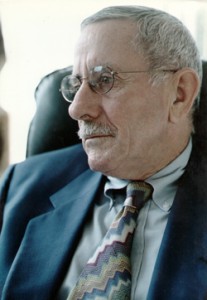



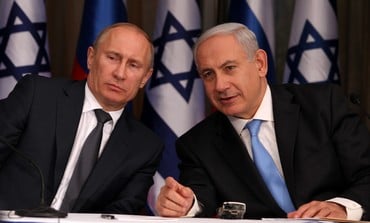

 The 2017 coup relied on Chiwenga’s Joint Operation Command, an army junta that was already controlling much of Zimbabwe behind the scenes, partly funded by diamond mining arranged through Chinese mining joint ventures. Given how erratic Mugabe had become, how his policies discouraged investment, and how he turned against the Chinese firms allied with Chiwenga in 2016 due to their
The 2017 coup relied on Chiwenga’s Joint Operation Command, an army junta that was already controlling much of Zimbabwe behind the scenes, partly funded by diamond mining arranged through Chinese mining joint ventures. Given how erratic Mugabe had become, how his policies discouraged investment, and how he turned against the Chinese firms allied with Chiwenga in 2016 due to their 







